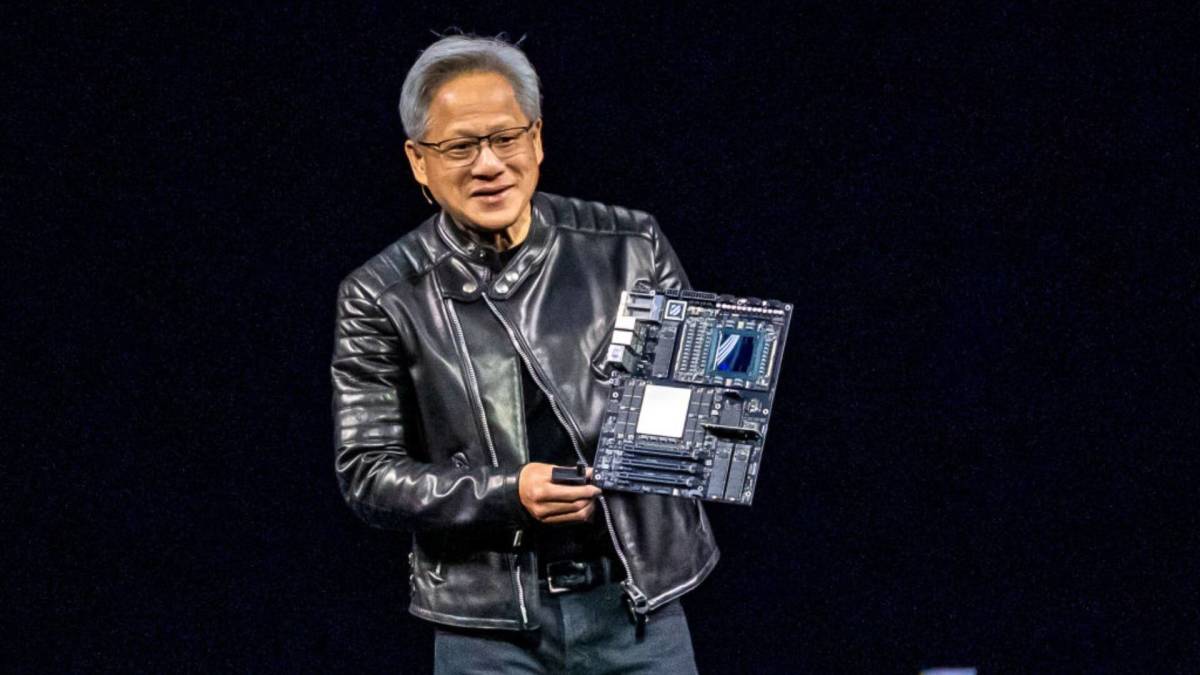Just when you think Nvidia NVDA can’t go any bigger, it does.
In Nvidia’s latest AI flex, the tech behemoth announced a whopping $100 billion investment in OpenAI.
The deal anchors the rollout of 10+ gigawatts of Nvidia systems to efficiently train and run the next wave of models, with deliveries set to begin in the second half of 2026. Think utility-scale compute, but for artificial intelligence.
Nvidia’s OpenAI investment at a glance:
- Staged LOI: Letter of intent to deploy ≥10 GW of NVIDIA systems; with Nvidia to shell out $100 billion as capacity is built out.
- Cash-for-chips loop: Nvidia’s cash buys non-voting OpenAI equity, with OpenAI using those proceeds to scoop up Nvidia’s chips/systems.
- Milestone tranches: First $10 billion at signing, with additional increments linked to each gigawatt deployed (multi-year rollout).
OpenAI’s reach justifies the scale.
ChatGPT boasts a mind-boggling user base exceeding 700 million weekly active users, with the company exploring a secondary market that could peg its value around $500 billion. This is typically a waypoint that keeps IPO chatter alive.
For Nvidia, this is home turf. It owns the AI training market with an incredible 90%+ share, and the stock’s $4 trillion milestone in July is a clear tell on shareholder conviction.
More importantly, for its business, the roadmap expands, from Blackwell to next-gen chips geared to video and software generation, to the switches connecting it all.
All of this has caught the eye of Bank of America analysts, who revamped their Nvidia OpenAI outlook as Wall Street resets expectations across the entire AI trade.

Image source: Morris/Bloomberg via Getty Images
Bank of America says Nvidia-OpenAI could be half-trillion-dollar engine
Bank of America’s Vivek Arya is leaning in hard on Nvidia NVDA, following its OpenAI tie-up, hailing the sales opportunity that could reach $300 billion to $500 billion over time.
“The partnership includes a letter of intent for NVDA to be involved in at least 10 gigawatts of systems, starting in the second half of 2026 with Vera Rubin,” the team wrote, effectively saying that the haul could be a 3x to 5x return on Nvidia’s planned $100 billion outlay.
Related: Bank of America shocks with AMD stock verdict post Nvidia-Intel deal
Vera Rubin is Nvidia’s next-generation AI accelerator, the successor to Blackwell. Where Blackwell sets new computing power records, Rubin takes things up a notch or two.
In fact, it dishes out 50 petaflops of FP4 inference, more than double the 20 petaflops that Blackwell can achieve. On a bigger scale, a full Rubin rack can potentially provide 3.3× the performance of a comparable Blackwell Ultra rack.
The other needle-mover is that OpenAI will work closely with Nvidia as a preferred strategic compute and networking partner, expanding the company’s lead over competitors like Broadcom and AMD.
More News:
- Qualcomm just made a massive leap into Tesla’s turf
- Cathie Wood goes biotech shopping, shells out $7.7 million
- Moody’s stuns with urgent call on Oracle’s future
It matters a ton for investors, as the companies feel the buildout targets at least 10 GW of Nvidia systems, with initial capacity landing in late 2026. However, we could see its impact in order books well before then.
Also, Bank of America reiterated its buy rating on Nvidia with a $215 price target following the announcement, keeping it at the top of its preferred list as AI infrastructure spend grows.
Moreover, if the LOI turns into iron-clad purchase commitments, BofA’s half-trillion math becomes a multi-year revenue engine.
Nvidia’s $100 billion OpenAI bet comes with bold words from Huang, Altman
Nvidia’s power-packed $100 billion deal with OpenAI isn’t just about hardware; it’s about staking a claim on the future of AI.
CEO Jensen Huang called it “the next leap forward,” planning to deploy nearly 10 gigawatts of Nvidia systems, powering “the next era of intelligence.”
Related: Warren Buffett’s Berkshire exits 17-year stake
Also, OpenAI chief Sam Altman was just as blunt: “Everything starts with compute… we will utilize what we’re building with NVIDIA to empower people and businesses at scale.”
On Wall Street, analysts are buzzing; the scale is jaw-dropping.
Stacy Rasgon at Bernstein called the move “positive” for OpenAI’s compute ambitions but warned of “circular” concerns over Nvidia’s investment layering back into chip revenues.
Gene Munster of Deepwater also called it the “latest salvo” in the AI arms race, raising the bar for rivals. Also, Gil Luria at D.A. Davidson flagged risks of Nvidia looking like an “investor of last resort” if OpenAI struggles to monetize.
The structure itself, though, seems tricky.
Nvidia takes non-voting shares, and OpenAI can effectively use the proceeds to buy Nvidia’s chips. While the setup looks neat on paper, it could unravel if tranche triggers slip or deal terms change.
Also, if OpenAI’s build plan wobbles, and Nvidia still has limited control despite the outlay, things could even get more complicated.
Then there’s execution and scrutiny. Rolling out 10 GW only starts in the second half of 2026, with access to electricity being a real bottleneck that can slow timelines. Additionally, regulators are also eyeing the tie-up given Nvidia’s chip dominance.
Key takeaways:
- 10 GW buildout locked in, with the first 1 GW slated for the second half of 2026 (Vera Rubin).
- OpenAI names Nvidia as the preferred computing and networking partner.
- Analysts peg AI data centers at a whopping $50 billion per gigawatt, hinting at significant revenue potential.
Related: Goldman Sachs resets bold S&P 500 target
#Bank #America #NvidiaOpenAI #call #puts #trillion #table